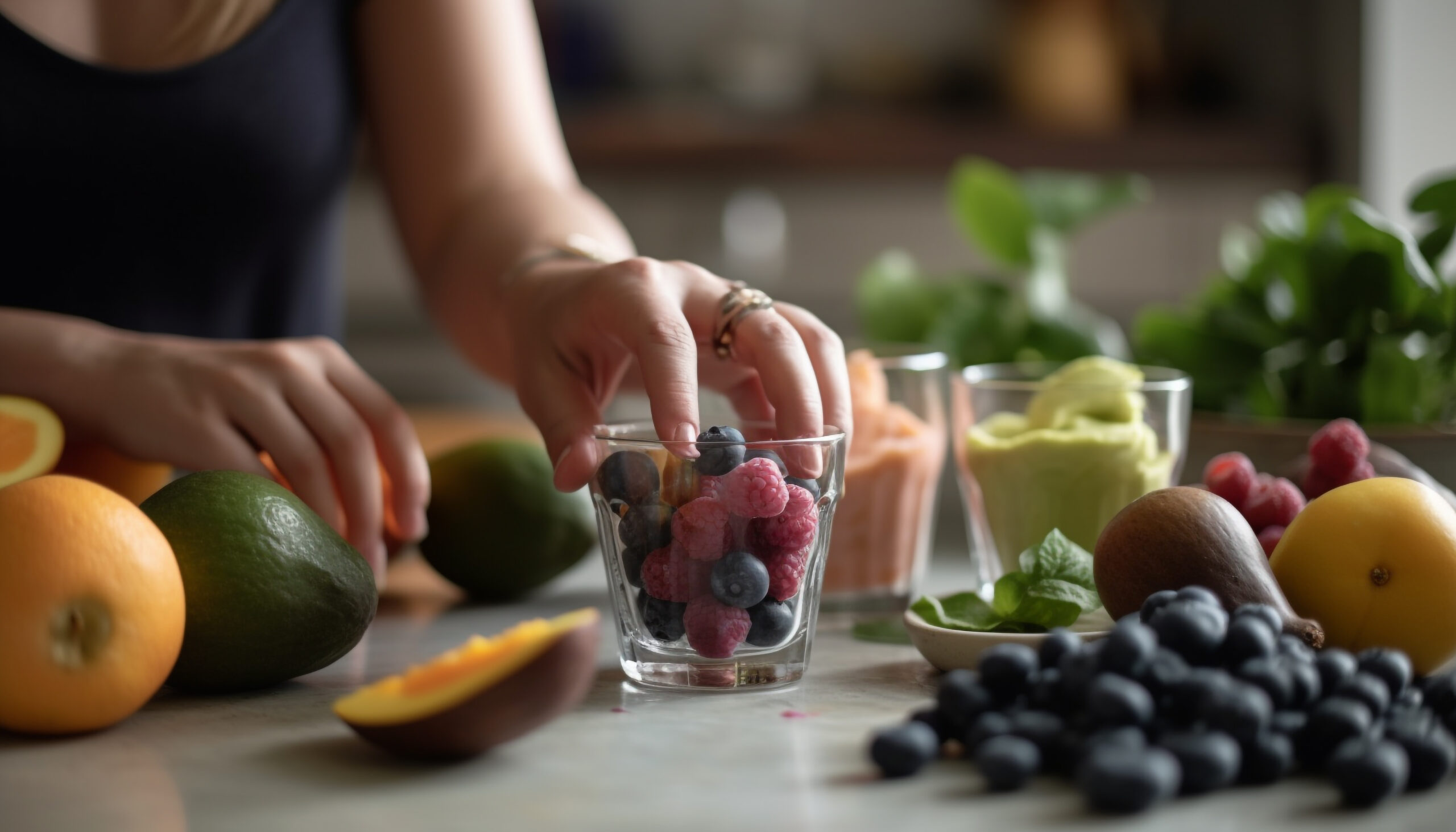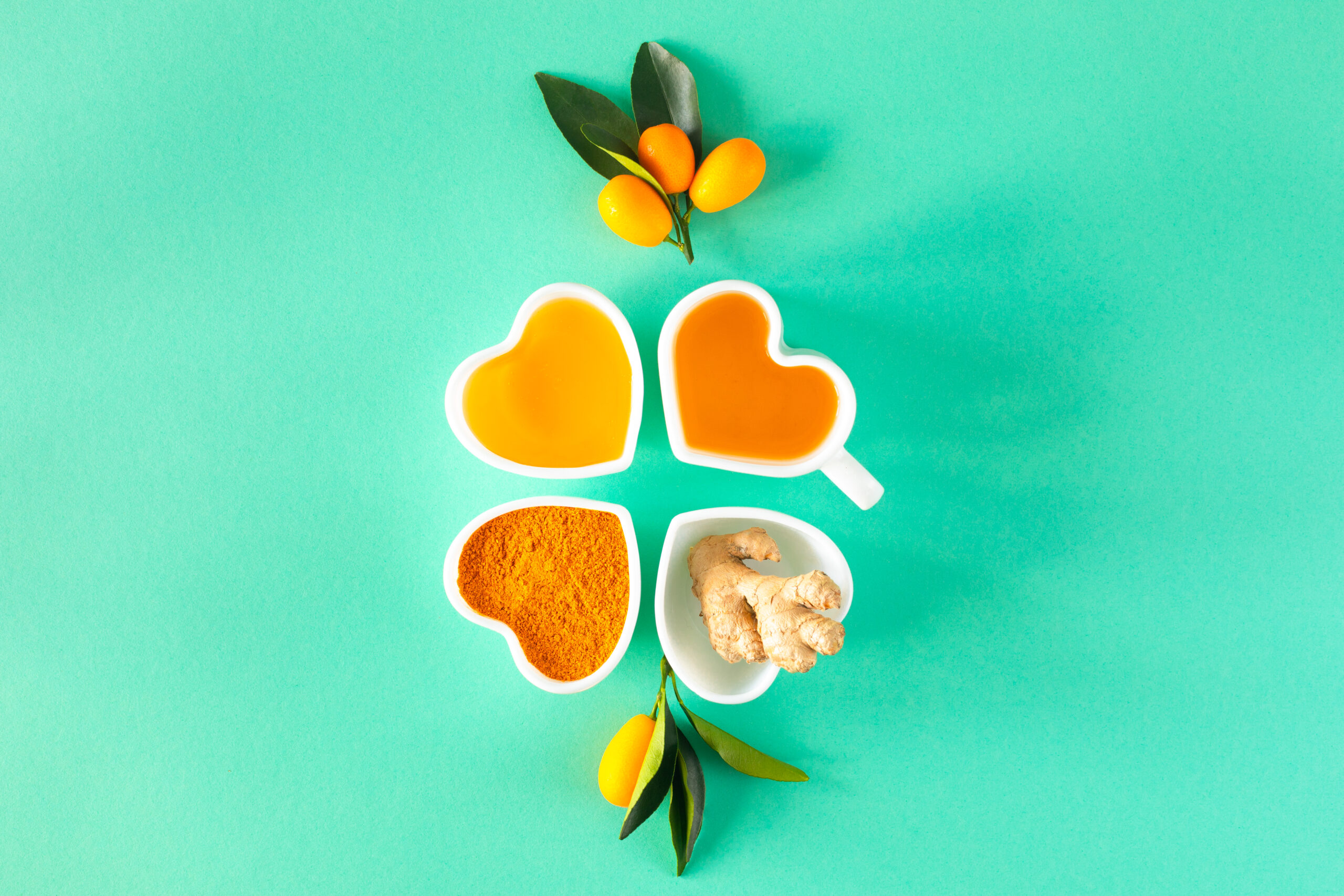Bloating after a meal. Brain fog that won’t lift. Joint stiffness, low energy, or that constant feeling of being off. These aren’t random—they’re how inflammation whispers through the body.
We don’t see inflammation as the enemy. It’s your body’s intelligent alarm system—protective, responsive, and deeply intuitive. But when that alarm stays switched on for too long, it stops helping and starts hurting.
The goal isn’t to suppress it. It’s to understand it. To respect it. And to gently work with your body—not against it.
Let’s dive into a lifestyle-led approach to reducing inflammation naturally—using food, breath, rest, and rhythm as tools to bring your body back into balance.
What Is Inflammation and Why Does It Linger?
Inflammation is one of the most intelligent things your body does. It’s how your system protects, repairs, and brings attention to what needs healing. That’s acute inflammation—and it’s necessary.
But chronic inflammation is different. It lingers quietly beneath the surface for weeks, months, sometimes even years. It doesn’t always scream—it whispers. Fatigue, weight gain or loss, skin flare-ups, joint pain, lowered immunity… these are all signals.

Over the years, we have seen how chronic inflammation shows up across all ages. And how often it’s at the root of conditions like type 2 diabetes, autoimmune issues, cardiovascular disease, and even anxiety, among others.
But here’s what we want you to know: With gentle, consistent shifts—nourishing food, better sleep, less stress—you can reduce inflammation without going to extremes.
You don’t have to overhaul your life. You just have to start working with your body instead of against it.
The Science of Inflammation: What Happens Beneath the Surface
Inflammation isn’t just a surface-level response—it happens deep within your cells. When the body detects a threat (like injury, infection, toxins, or chronic stress), your immune system releases inflammatory mediators—cytokines, histamines, and prostaglandins—to defend and repair.
This is helpful in the short term. But when inflammation becomes chronic, those same chemical messengers begin to damage healthy tissues.
What does science say?
- Brain & Mood: Studies show that elevated cytokines like IL-6 and TNF-α can cross the blood-brain barrier, disrupting neurotransmitter balance. This has been linked to depression, brain fog, and poor memory (Harvard Health Publishing, 2021).

- Gut Health: Chronic inflammation disrupts gut barrier integrity, increasing intestinal permeability (leaky gut). This contributes to autoimmune conditions and food sensitivities (Fasano, 2012).

Source: Paray, B. A., Albeshr, M. F., Jan, A. T., & Rather, I. A. (2020). Leaky Gut and Autoimmunity: An Intricate Balance in Individuals Health and the Diseased State. International Journal of Molecular Sciences, 21(24), 9770. https://doi.org/10.3390/ijms21249770
- Heart Health: High-sensitivity C-reactive protein (hs-CRP), an inflammation marker, is a known risk factor for cardiovascular disease—even independent of cholesterol levels (Ridker et al., NEJM, 2000).

- Metabolism: Inflammation impairs insulin sensitivity, contributing to blood sugar imbalances and increasing the risk of type 2 diabetes (Hotamisligil, Nature, 2006).

- Immune System: A constantly activated immune response can become dysfunctional—either overreacting (as in autoimmune diseases) or underreacting (weakened defenses).
Inflammation isn’t always loud. It’s often silent, slow, and systemic. That’s why supporting the body through food, rest, movement, and breath isn’t optional—it’s essential.
Because every system in your body—from your skin to your cells—feels the ripple effects of unchecked inflammation.
Your Body’s Natural Defense Systems
I’ve always believed that your body isn’t broken—it’s brilliantly designed to heal. But that healing depends on the harmony of five key defense systems working together like a symphony.
- Angiogenesis – Builds and maintains healthy blood vessel growth and circulation
- Immunity & Inflammation – Ensures the immune response is intelligent, not overreactive
- Stem Cell Regeneration – Supports internal repair and cellular renewal
- Gut Microbiome – Regulates digestion, detoxification, and even your mental health
- DNA Repair & Protection – Defends against oxidative stress and premature aging
When you nourish these systems with quality sleep, daily movement, anti-inflammatory foods, breath, and emotional balance—your body knows exactly what to do.
You don’t need to push it. Just support it. That’s where real, sustainable healing begins.
Chronic Stress: The Silent Igniter of Inflammation
We have seen it over and over again—inflammation doesn’t just come from food or environment. It often begins with unaddressed, chronic stress.
Stress isn’t just emotional—it’s deeply biochemical. Elevated cortisol and adrenaline disrupt your sleep, spike blood sugar, suppress immunity, and inflame the gut. Over time, this creates a body that’s always on high alert, always inflamed.
The scary part? You can get so used to it, it starts to feel normal—until the symptoms pile up.
But the good news is this: peace is powerful. Breathwork, quality sleep, rest, and emotional hygiene aren’t luxuries—they’re anti-inflammatory strategies.
The moment you start slowing down—consciously—you begin shifting from inflammation to healing. Peace isn’t passive. It’s protective.

Food as Communication: Anti-Inflammatory Nutrition 101
Food isn’t just fuel—it’s information. Every bite you take sends a message to your immune system, your gut, and your cells.
Refined sugar, inflammatory oils, alcohol, and heavily processed foods confuse that message. They inflame your gut, spike your blood sugar, and trigger internal stress. Over time, your body stops feeling safe.
We don’t believe in extremes or fad diets. Our anti-inflammatory framework begins with gentle, sustainable upgrades:
- Add antioxidant-rich foods like berries, greens, turmeric, ginger, garlic, and omega-3-rich seeds
- Eat clean, complex carbs like red rice, millets, or sweet potatoes—mindfully and without excess
- Avoid sharp blood sugar spikes by combining fiber, fat, and protein with every meal

One of our most effective tools is our Meal Flow: start with veggies, follow with protein, finish with clean carbs. This order supports gut health, balances insulin, and lowers inflammation—naturally.
You don’t need to eat less. You need to eat with awareness. That’s where healing begins.
Nature’s Arsenal: Foods That Heal, Not Harm
You don’t need expensive superfoods to reduce inflammation. Nature has already given us everything we need—we just have to bring it back to our plates. Here’s what we have seen work time and again:
Fats That Soothe
- Cold-pressed oils like mustard, coconut, and sesame
- Omega-3 rich seeds: flax, chia, walnuts
- Whole nuts and avocado (in moderation)
These fats are anti-inflammatory, support brain health, and stabilize blood sugar.
Vegetables and Fruits
- Leafy greens, beetroot, bell peppers, broccoli
- Berries, papaya, guava, apples—rich in polyphenols and fiber
They protect cells, support detox pathways, and nourish your gut microbiome.
Whole Grains and Legumes
- Millets like kodo, foxtail, and amaranth
- Lentils, kidney beans, horse gram
Packed with minerals, plant protein, and complex carbs that don’t spike inflammation.
Gut-Friendly Options
- Fermented foods: kanji, curd, buttermilk, homemade pickles
Spices That Heal
- Turmeric + black pepper: Powerful anti-inflammatory combo
- Ginger: Soothes digestion and muscle inflammation
- Garlic: Supports immunity and cellular repair
- Garam Masala blends: Cumin, coriander, clove, nutmeg—all balancing digestion and stress

Anti-Inflammatory Sweet Ritual
Dark chocolate—when ethically sourced, minimally processed, and free from heavy metals like cadmium and lead—is more than just a sweet treat. It’s a functional anti-inflammatory food. Rich in flavonoids, polyphenols, and magnesium, dark chocolate helps neutralize oxidative stress, reduce inflammation markers like CRP, support blood vessel health, and even boost mood-regulating neurotransmitters like serotonin. Its healthy fats aid nutrient absorption, while its calming effect on the nervous system makes it a gentle tool for stress-related inflammation.
When used intentionally and in moderation, dark chocolate can soothe cravings, offer emotional comfort, and support cellular healing—without the sugar crash of processed sweets. As always, quality matters more than quantity. One of my favorite rituals is a warm cup of anti-inflammatory hot chocolate: mix a teaspoon of raw cacao powder (75% dark or above) with a cup of warm water, milk or plant-based milk (like almond or oat). For added benefit, you can add a pinch of Ceylon cinnamon and celtic sea salt. Sip on this warm or cold to calm the nervous system. As always, it’s not about quantity—it’s about quality and intention.
Team Luke’s Anti-Inflammatory Protocol: Where Simplicity Meets Science
Over 14+ years, we’ve seen thousands of people across the world reduce inflammation—not by chasing trends, but by returning to what the body understands: rhythm, simplicity, nourishment, and rest.
Our anti-inflammatory protocol isn’t a fad or restrictive cleanse. It’s a holistic blueprint designed to lower chronic inflammation while supporting your gut, hormones, metabolism, and immunity—gently and sustainably.
Here’s what it includes:
- The Metabolic Soup and Metabolic Drink: These aren’t just recipes—they’re therapeutic tools designed to support mitochondrial health, reduce oxidative stress, and activate brown fat to naturally lower inflammation.
- The Meal Flow: A sequence of eating—starting with cooked vegetables or salads, followed by protein, and ending with clean carbohydrates. This improves digestion, prevents post-meal sugar spikes, and reduces inflammatory triggers at the cellular level.
- Anti-inflammatory food swaps: From cold-pressed oils and fermented foods to high-fiber grains, antioxidant-rich spices, and anti-inflammatory beverages.
- Lifestyle integration: Sleep hygiene, breathwork, tech boundaries, emotional regulation, and deep cellular rest—because nutrition works better when the nervous system feels safe.
This protocol isn’t about perfection. It’s about consistency. And when practiced regularly, the body begins to shift—from inflammation to healing, from survival to vitality.
Daily Habits That Reduce Inflammation Beyond the Plate
In our years of working with people across age groups and health conditions, one thing stands out: food alone isn’t enough. It’s your everyday habits—the small, consistent ones—that either build inflammation or dismantle it. Here’s how to shift the needle gently and powerfully:
- Sleep deeply and consistently
Lack of sleep isn’t just tiring—it’s inflammatory. Research shows that disrupted sleep increases markers like CRP and IL-6. Aim for seven to nine hours of quality, uninterrupted sleep. Keep bedtime consistent, wind down without screens, and give your body the recovery it deserves. - Move gently and regularly
You don’t need intense workouts to reduce inflammation. A 30-minute walk, yoga flow, or a few rounds of Surya Namaskars can activate your lymphatic system, improve circulation, and reduce cortisol. Movement isn’t about punishment—it’s about flow. - Breathe consciously
Shallow chest breathing keeps your body in survival mode. Deep belly breathing, especially through practices like Anulom Vilom, Bhramari, or even slow box breathing, shifts your nervous system into parasympathetic mode—where healing, digestion, and repair happen naturally. - Limit toxin overload
Your liver and gut are already working hard. Smoking, excessive alcohol, refined sugar, and ultra-processed foods only add more load. Make room for healing by minimizing what burdens your body. Swap in clean water, fresh meals, and natural alternatives when possible. - Practice emotional hygiene
You cannot cleanse your body while holding onto anger, guilt, or resentment. Suppressed emotions release stress hormones and inflammation-triggering chemicals. Journaling, forgiveness work, therapy, or even a heart-to-heart conversation can be more healing than any supplement. - Minimize tech fatigue
Constant notifications, blue light exposure, and doom-scrolling raise cortisol and interfere with melatonin production. That means poor sleep and a tired nervous system. Set digital boundaries, take regular screen breaks, and unplug at least 30 minutes to an hour before bedtime. - Eat slowly and mindfully
Your digestion starts in your mouth—not your stomach. Eating in a rushed, stressed state shuts down digestive enzymes and contributes to bloating and inflammation. Sit down, chew thoroughly, and bring awareness to your meals—it’s a simple act of respect toward your body. - Clean your air, water, and environment
Invisible pollutants like poor indoor air quality, contaminated water, or synthetic cleaning products can quietly overstimulate your immune system. Use the right kind of water filters, add air-purifying indoor plants, choose natural cleaners, and spend more time outdoors only when air quality is good.
Healing doesn’t happen in extremes. It happens through rhythm, presence, and small daily choices. When your lifestyle supports calm, your body no longer needs to stay inflamed. It starts to trust again—and that’s where true recovery begins.
Final Reflection: Inflammation Is Feedback, Not Failure
Your body isn’t fighting you—it’s guiding you.
That fatigue, the bloating, the restless nights—they’re not random. They’re signals. Gentle nudges asking you to slow down, breathe deeper, and nourish wiser.
There’s no one perfect protocol. Just a willingness to listen. And to respond—not with punishment or panic, but with small, consistent care.
One nourishing meal. One tech-free evening. One deep, intentional breath.
These aren’t insignificant. They’re medicine.
Healing doesn’t always look dramatic. It looks like a rhythm. It feels like safety. It builds through support.
Your body already knows how to heal. You just need to give it the chance.
Ready to Make Your Health a Priority?
Start your journey with one positive action today.
Check Out Our Rejuvenation and Cleanse Program.
Looking for personalized advice? Reach Out to Team Luke’s Integrative Health Coaches!
Book a one-on-one with our team. Call: 1800 102 0253 or write to us at [email protected].
Disclaimer: The information provided in this blog is intended for educational purposes only and is not a substitute for professional medical advice, diagnosis, or treatment. Always consult with your healthcare provider before making any changes to your nutrition, exercise routine, or lifestyle. The effectiveness of the strategies mentioned may differ from person to person. The content is based on current research, but it is important to remember that science and health recommendations may evolve over time.
Team Luke
Our team of registered dietitians, certified nutritionists, lifestyle coaches, medical practitioners, and holistic health experts come together to share practical, accessible insights for your well-being. Whether you're seeking tips on preventive health, managing a specific condition, or simply looking to live a more balanced life, you’ll find a wealth of easy-to-apply knowledge here.
Start Your Wellness Journey
Feeling inspired to take the next step in your wellness journey? Connect with us to explore how our tailored programs can support your health journey. Your transformation is just a conversation away.



